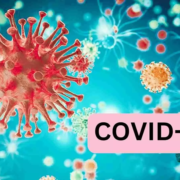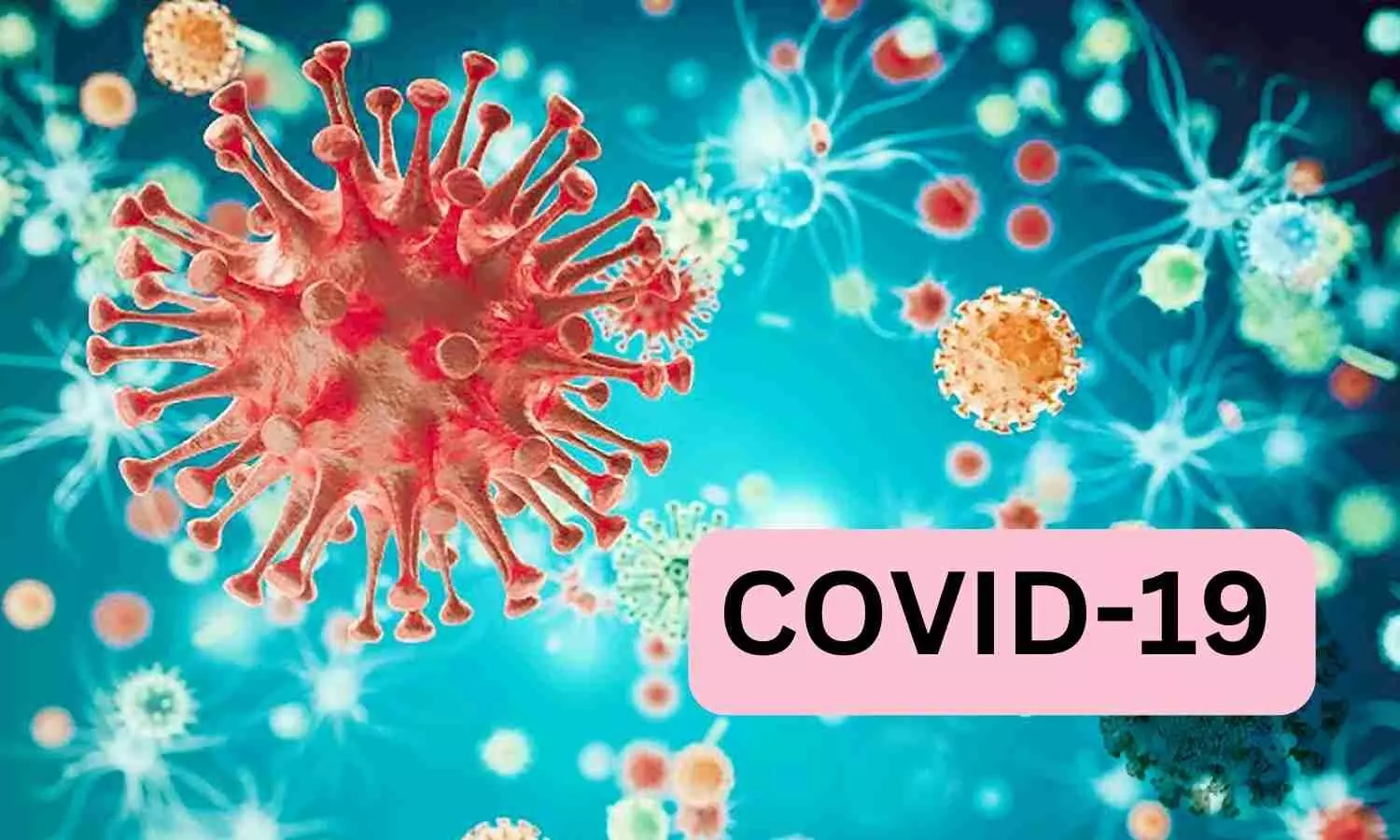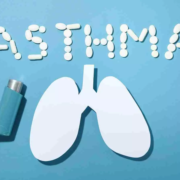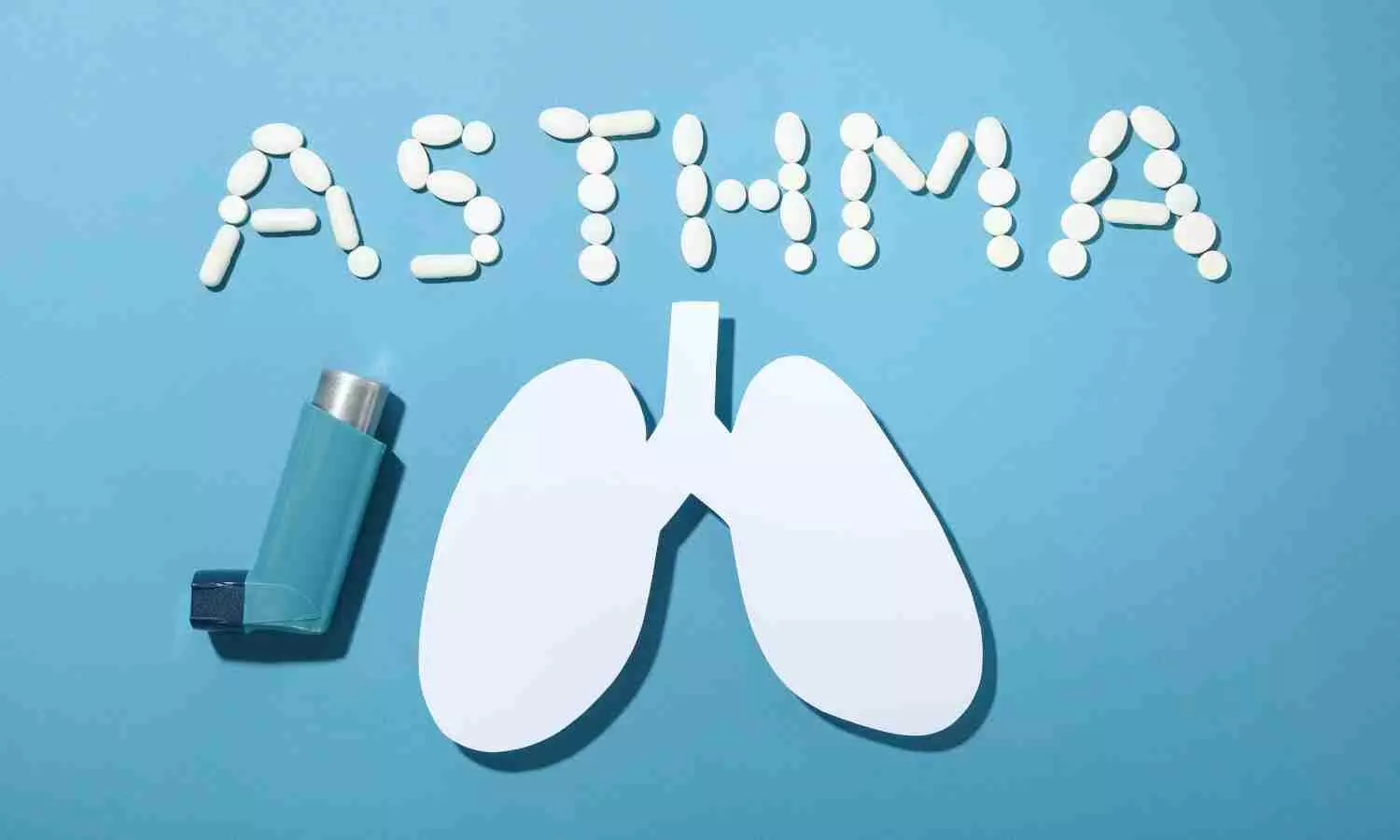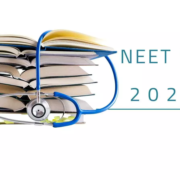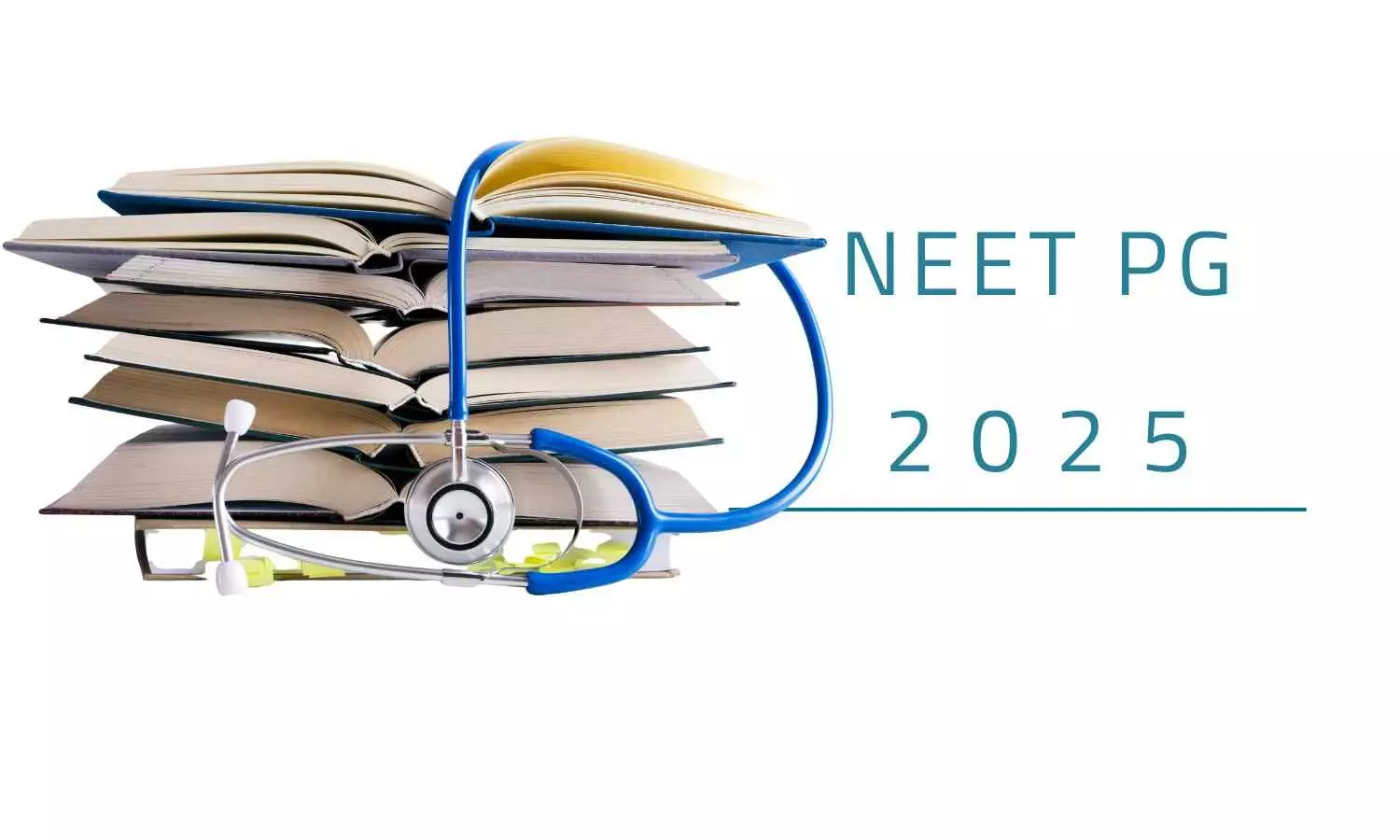
Punjab: The Baba Farid University of Health Sciences (BFUHS) recently invited applications for PG medical admissions 2025 in the state.
All the interested candidates willing to take admission to MD/MS/PG Diploma, DNB Post Graduate Diploma in Sports Medicine and Six months training in Ultrasonography Courses are advised to take note of all the fees and seat matrix details as mentioned below according to the prospectus issued by the university.
Application Fee:
(i) Admission Application Fee of Rs. 5000 +18% GST (Rs. 5900/-) will be deposited through online payment gateway only. SC candidates will deposit fee of Rs. 2500+18% GST (Rs. 2950).
(ii) Only those Admission Application Forms will be considered for counseling, fee for which has been deposited by due date/time.
(iii) No request for accepting the deposition of application fee shall be considered after due date/time.
(iv) Admission/application fee once deposited in University Account will not be refunded/adjusted in any case.
ELIGIBILITY / INSTRUCTIONS FOR NRI CANDIDATES
1. The NEET PG qualified candidates who seeks to apply under NRI quota seats, have to obtain provisional Eligibility/equivalency certificate from the BFUHS, Faridkot by appearing physical in the admission branch of BFUHS, Faridkot and will have to apply on prescribed format available on university website alongwith prescribed fee for NRI seats.
2. For ascertaining the eligibility relevant documents including foreign Country Passport or Green Card or Permanent Resident Card or Proof of Residency of Foreign Country issued by competent authority or OCI/PIO Card issued by the Government of India shall be taken into consideration.
3. The admission under NRI category shall be strictly according to preference category wise merit as per Punjab Govt. notification/instructions.
4. The following is the procedure of admission under NRI Category :
(i) Application form for issuing of Eligibility/ Equivalency certificate is available in the Admission Branch BFUHS, Faridkot and can be downloaded from University website.
(ii) Eligibility
* NRI who passed MBBS
* Must have completed internship as per NMC
* Must be qualified- NEET-PG-2025
(iii) Candidate must be registered with MCI /State Medical Council and must have recognition Certificate of MBBS/Equivalent Degree from MCI.
(iv) After getting Eligibility/ Equivalency certificate, candidate has to apply on prescribed application form upto stipulated period to the University for Counselling for admission to PG Medical Courses under NRI quota in Private colleges.
(v) Fee Structure in Private Colleges:
Fee Structure for NRI candidates:
Fee
Structure for NRI candidates: |
| Lump sum |
MD/MS (Clinical) US $ |
MD/MS
(Basic Sciences)US $ |
PG
Diploma US $ |
| 125,000/- |
20,000/- |
30,000/- |
| Installments |
MD/MS (Clinical) US $ |
MD/MS (Basic
Sciences)US $ |
PG Diploma US $ |
First
(at the time of Admission) |
65000/- |
10,000/- |
15,000/- |
Second
(after the one year of 1st Payment) |
30,000/- |
5,000/- |
8,000/- |
Third
(after the 2 year of 1st payment) |
30,000/- |
5,000/- |
7,000/- |
(a) The student will have to give a bank guarantee/surety bond for the residual fee, if he/she opts to pay the fee in installment as provided.
(b) Selected Candidates will have to deposit full/1st installment of the fee through university website from the foreign NRI account after seat allotment and before joining the allotted college.
(c) If payment made through Demand Draft, Demand Draft should be in favour of Registrar, Baba Farid University of Health Sciences, payable at Faridkot.
(d) The payment should either be in US $ or is drawn from their own or parents NRE account along with bank certificate/statement showing that payment is drawn from candidate or parents account.
(e) The detail of bank account for the NRI candidates who will be selected for admission under NRI quota is as under:
Beneficiary Name: REGISTRAR Baba Farid University of Health Sciences, Faridkot
Beneficiary A/c No. 078301005826
Beneficiary Bank: ICICI Bank Faridkot Punjab , India
Swift Code: ICICINBBNRI
IFSC Code: ICIC0000783
Branch Adress: BX5, Balmiki Chowk, Faridkot, 151203
Note: Registration /continuation fee @ 15% of tuition fee will be charged from NRI candidates except Adesh University, Bathinda and SGRD University, Amritsar.
Seats in MD/MS/PG Diploma courses under NRI quota of various private colleges will be put up on University Website.
5. The following is the fee for getting Eligibility certificate and application fee under NRI Quota:-
a) Fee for getting Eligibility certificate = US $ 1500
b) Application Fee = US $ 1500
c) Application Form fee = Rs.3000/-
d) Eligibility certificate Form fee = Rs. 2500/-
INSTRUCTIONS REGARDING DEPOSITION OF FEE BY PROVISIONALLY SELECTED CANDIDATES IN ONLINE COUNSELLING – FEE AND SPECIALITIES (BASIC/CLINICAL)
1. The provisionally selected candidates are required to deposit the requisite six months fee through university payment gateway in university account after logging into their login ID account and carry the payment receipt to the respective allotted institute.
2. The Provisional Selection Slip will be generated only after the confirmation of deposition of fee.
Details of six month fee/minimum fee for 1st year to be collected from the provisionally selected candidates.
| Sr.No. |
Speciality |
Stream |
Govt. College/Hospital
six month fee (Rs.) |
Private
Colleges Six month fee |
| Govt. Quota (Rs) |
Mgt. Quota (Rs) |
NRI
Quota 1st Installment |
| 1. |
Anatomy |
Basic |
50000 |
137500 |
137500 |
US$ 10000 |
| 2. |
Biochemistry |
Basic |
50000 |
137500 |
137500 |
US$ 10000 |
| 3. |
Immuno
Haematology and Blood Transfusion |
Basic |
50000 |
137500 |
137500 |
US$ 10000 |
| 4. |
Microbiology |
Basic |
50000 |
137500 |
137500 |
US$ 10000 |
| 5. |
Pharmacology |
Basic |
50000 |
137500 |
137500 |
US$ 10000 |
| 6. |
Physiology |
Basic |
50000 |
137500 |
137500 |
US$ 10000 |
| 7. |
Community
Medicine |
Basic |
50000 |
137500 |
137500 |
US$ 10000 |
| 8. |
Forensic
Medicine & Toxicology |
Basic |
50000 |
137500 |
137500 |
US$ 10000 |
| 9. |
Anaesthesiology |
Clinical |
62500 |
342500 |
342500 |
US$ 65000 |
| 10. |
Skin
& STD |
Clinical |
62500 |
342500 |
342500 |
US$ 65000 |
| 11. |
General
Medicine |
Clinical |
62500 |
342500 |
342500 |
US$ 65000 |
| 12. |
Obstetrics
& Gynaecology |
Clinical |
62500 |
342500 |
342500 |
US$ 65000 |
| 13. |
Ophthalmology |
Clinical |
62500 |
342500 |
342500 |
US$ 65000 |
| 14. |
Orthopedics |
Clinical |
62500 |
342500 |
342500 |
US$ 65000 |
| 15. |
ENT |
Clinical |
62500 |
342500 |
342500 |
US$ 65000 |
| 16. |
Pathology |
Clinical |
62500 |
342500 |
342500 |
US$ 65000 |
| 17. |
Paediatrics |
Clinical |
62500 |
342500 |
342500 |
US$ 65000 |
| 18. |
Psychiatry |
Clinical |
62500 |
342500 |
342500 |
US$ 65000 |
| 19. |
Radio-diagnosis |
Clinical |
62500 |
342500 |
342500 |
US$ 65000 |
| 20. |
General
Surgery |
Clinical |
62500 |
342500 |
342500 |
US$ 65000 |
| 21. |
Radiotherapy |
Clinical |
62500 |
342500 |
342500 |
US$ 65000 |
| 22. |
TB
& Chest |
Clinical |
62500 |
342500 |
342500 |
US$ 65000 |
| 23. |
Diploma
in Anaesthesia (DA) |
Clinical |
62500 |
205000 |
205000 |
US$ 15000 |
| 24. |
Diploma
in Child Health (DCH) |
Clinical |
62500 |
205000 |
205000 |
US$ 15000 |
| 25. |
PGDSM |
|
20000 |
|
|
|
| 26. |
Ultrasonography
Training |
Training |
10000 |
50000 |
50000 |
|
| 27. |
DNB
Courses |
|
37500 |
|
|
|
FEE AND PENALTY CLAUSE.
1. Candidate has to deposit security amount through online University payment gateway as per Punjab Government notification.
2. Candidate’s who will not opt/forgo the seats in first counseling or have not attended the 1st counseling but are registered with the BFUHS, shall still be eligible for 2nd round of counseling of State of Punjab.
3. Candidate’s who will surrender the seat in writing after joining in 1st round of online counseling within stipulated period and who will not participate in any subsequent rounds, their all fee will be refunded without any penalty.
4. The Punjab Govt. notification for PG admission 2025 and terms and conditions as contained on the website www.mcc.nic.in will be followed in letter and spirit.
5. Candidates are advised to keep in touch with the BFUHS university website and Medical Counselling Committee website for further notices, process of counselling and updates.
6. The Security Deposit of candidates who have been allotted a seat in the Second Round or subsequent rounds but do not join the respective institution or surrender the seat due to any unforeseen reason, will be forfeited. Also, the Security Deposit will be forfeited if the admission gets cancelled due to any reason. E.g. in case the candidates gives wrong information at the time of registration on the basis of which a seat may be allotted and later cancelled by the Admission Authorities or the candidate fails to produce the required documents at the time of admission (within stipulated time).
7. Candidate to whom seat is allotted during 2nd /subsequent round but they do not join the seat, penalty shall be imposed. Terms and conditions regarding penalty/forfeiture of security deposit shall be followed strictly as per Gazettee of India notification no. No.MCI-18(1)/2018-Med./100818 dated 05.04.2018.
8. Candidates who have joined the allotted seat in Round 3 and further rounds of counselling will not be allowed to resign and will also be ineligible to take part in further rounds of any type of counselling as per directions of Hon’ble Supreme Court of India dated 16.12.2021 passed in Special Leave to Appeal (C) No. 10487 of 2021 Nihila P.P Vs Medical Counselling Committee and ors.
9. Candidates who will not join the allotted seat in Round 2 will be eligible for further rounds of counselling subject to forfeiture of security deposit and fresh registration and fresh depositing of refundable security deposit in 3rd round only.
10. Under the following circumstances the refundable security deposit will be forfeited :
i. Candidate allotted a seat in round 1 & not upgraded in round 2, but surrenders the seat after stipulated time given for free exit.
ii. Where a Candidate has been allotted a seat in Round 2 or subsequent rounds and does not report at the allotted college/hospital to complete the admission process.
iii. The Security Deposit will be forfeited if the admission gets cancelled after allotment due to any reason. E.g., in case the candidate gives wrong information at the time of registration on the basis of which a seat may be allotted and later cancelled by the Admission Authorities at the time of reporting or fails to produce the required documents at the time of admission or any other valid reason
Tentative distribution of seats for admission to MD/MS/PG Diploma courses, session 2025.
Government Medical College, Patiala (MD/MS Seats)
Government
Medical College, Patiala |
|
Name of Specialty
|
Total Seats
|
AIQ (50%)
|
State Quota (50%) IP
|
State Quota (50%) SC
|
State Quota (50%) BC
|
State Quota (50%) PWD (IP)
|
State Quota (50%) EWS
|
Total State Seats
|
|
Anaesthesia
|
7
|
4
|
3
|
2
|
1
|
0
|
0
|
4
|
|
General Medicine
|
12
|
6
|
6
|
5
|
1
|
0
|
0
|
6
|
|
Obst. & Gynae
|
12
|
6
|
6
|
3
|
2
|
1
|
0
|
6
|
|
Paediatrics
|
7
|
4
|
3
|
1
|
1
|
1
|
0
|
3
|
|
Pathology
|
11
|
6
|
5
|
3
|
1
|
1
|
1
|
6
|
|
Psychiatry
|
3
|
1
|
2
|
2
|
0
|
0
|
0
|
2
|
|
Radio-diagnosis
|
9
|
4
|
5
|
3
|
1
|
1
|
1
|
6
|
|
Radiotherapy
|
2
|
1
|
1
|
1
|
0
|
0
|
0
|
1
|
|
Dermatology, Venerology
& Leprosy
|
5
|
2
|
3
|
3
|
0
|
0
|
0
|
3
|
|
Tuberculosis &
Respiratory Medicine
|
5
|
3
|
2
|
1
|
1
|
0
|
0
|
2
|
|
ENT
|
7
|
4
|
3
|
2
|
1
|
0
|
0
|
3
|
|
General Surgery
|
18
|
9
|
9
|
6
|
2
|
1
|
0
|
9
|
|
Opthalmology
|
6
|
3
|
3
|
2
|
1
|
0
|
0
|
3
|
|
Orthopaedics
|
8
|
4
|
4
|
3
|
1
|
0
|
1
|
5
|
|
Anatomy
|
7
|
3
|
4
|
3
|
1
|
0
|
1
|
5
|
|
Biochemistry
|
4
|
2
|
2
|
2
|
0
|
0
|
0
|
2
|
|
Preventive & Social
Medicine
|
2
|
1
|
1
|
0
|
1
|
0
|
0
|
1
|
|
Forensic Medicine
|
3
|
1
|
2
|
2
|
0
|
0
|
0
|
2
|
|
Microbiology
|
1
|
0
|
1
|
1
|
0
|
0
|
0
|
1
|
|
Pharmacology
|
5
|
3
|
2
|
0
|
1
|
1
|
0
|
2
|
|
Physiology
|
6
|
3
|
3
|
2
|
1
|
0
|
1
|
4
|
|
DA (Diploma in
Anaesthesia)
|
6
|
3
|
3
|
1
|
1
|
1
|
0
|
3
|
Government
Medical College, Amritsar |
|
Name of Specialty
|
Total Seats
|
AIQ (50%)
|
State Quota (50%) IP
|
State Quota (50%) SC
|
State Quota (50%) BC
|
State Quota (50%) PWD (IP)
|
State Quota (50%) EWS
|
Total State Quota
|
|
Anaesthesia
|
9
|
5
|
4
|
1
|
1
|
1
|
0
|
|
|
General Medicine
|
16
|
8
|
8
|
5
|
2
|
0
|
0
|
8
|
|
Obst. & Gynae
|
9
|
5
|
4
|
3
|
1
|
0
|
0
|
4
|
|
Paediatrics
|
5
|
3
|
2
|
2
|
0
|
0
|
0
|
2
|
|
Pathology
|
7
|
4
|
3
|
2
|
1
|
0
|
1
|
4
|
|
Psychiatry
|
3
|
2
|
1
|
1
|
0
|
0
|
0
|
1
|
|
Radio-diagnosis
|
5
|
3
|
2
|
1
|
0
|
1
|
1
|
3
|
|
Dermatology, Venerology
& Leprosy
|
4
|
2
|
2
|
1
|
1
|
0
|
0
|
2
|
|
Tuberculosis &
Respiratory Medicine
|
4
|
2
|
2
|
1
|
1
|
0
|
0
|
2
|
|
ENT
|
6
|
3
|
3
|
2
|
1
|
0
|
0
|
3
|
|
General Surgery
|
13
|
6
|
7
|
5
|
2
|
0
|
0
|
7
|
|
Opthalmology
|
6
|
3
|
3
|
3
|
0
|
0
|
0
|
3
|
|
Orthopaedics
|
9
|
4
|
5
|
4
|
1
|
0
|
1
|
6
|
|
Anatomy
|
6
|
3
|
3
|
2
|
1
|
0
|
0
|
3
|
|
Biochemistry
|
2
|
1
|
1
|
0
|
1
|
0
|
0
|
1
|
|
Preventive & Social
Medicine
|
5
|
2
|
3
|
3
|
0
|
0
|
1
|
4
|
|
Forensic Medicine
|
4
|
2
|
2
|
1
|
1
|
0
|
0
|
2
|
|
Microbiology
|
7
|
3
|
4
|
3
|
1
|
0
|
1
|
5
|
|
Pharmacology
|
4
|
2
|
2
|
2
|
0
|
0
|
0
|
2
|
|
Physiology
|
4
|
2
|
2
|
2
|
0
|
0
|
0
|
2
|
|
DA (Diploma in
Anaesthesia)
|
6
|
3
|
3
|
1
|
1
|
1
|
0
|
3
|
|
DCH (Diploma in Child
Health)
|
4
|
2
|
2
|
2
|
0
|
0
|
0
|
2
|
| Dayanand Medical College, Ludhiana (Private) (MD/MS Seats) |
|
Name of Specialty
|
Total Seats
|
Government Quota IP
|
Government Quota SC
|
Government Quota BC
|
Government Quota PWD (IP)
|
Government Quota Total
|
Management Quota Open
|
Management Quota SC
|
Management Quota BC
|
Management Quota PWD
|
Management Quota NRI
|
Management Quota Total
|
|
Anaesthesia
|
15
|
3
|
2
|
1
|
1
|
7
|
2
|
2
|
1
|
1
|
2
|
8
|
|
General Medicine
|
16
|
5
|
2
|
1
|
0
|
8
|
3
|
2
|
1
|
0
|
2
|
8
|
|
Immuno Haematology &
Blood Transfusion
|
3
|
1
|
1
|
0
|
0
|
2
|
0
|
0
|
0
|
0
|
1
|
1
|
|
Obst. & Gynae
|
4
|
2
|
0
|
0
|
0
|
2
|
0
|
1
|
0
|
0
|
1
|
2
|
|
Paediatrics
|
8
|
3
|
1
|
0
|
0
|
4
|
2
|
1
|
0
|
0
|
1
|
4
|
|
Pathology
|
8
|
1
|
1
|
1
|
1
|
4
|
1
|
1
|
1
|
0
|
1
|
4
|
|
Psychiatry
|
3
|
2
|
0
|
0
|
0
|
2
|
0
|
0
|
1
|
0
|
0
|
1
|
|
Radio-diagnosis
|
10
|
3
|
2
|
0
|
0
|
5
|
2
|
2
|
0
|
0
|
1
|
5
|
|
Dermatology, Venerology
& Leprosy
|
2
|
1
|
0
|
0
|
0
|
1
|
0
|
1
|
0
|
0
|
1
|
|
|
Otorhinolaryngology (ENT)
|
2
|
0
|
0
|
0
|
1
|
1
|
0
|
0
|
0
|
0
|
1
|
1
|
|
General Surgery
|
8
|
2
|
1
|
1
|
0
|
4
|
2
|
1
|
0
|
0
|
1
|
4
|
|
Ophthalmology
|
1
|
0
|
1
|
0
|
0
|
1
|
0
|
0
|
0
|
0
|
0
|
0
|
|
Orthopaedics
|
5
|
2
|
0
|
0
|
0
|
2
|
1
|
1
|
0
|
0
|
1
|
3
|
|
Anatomy
|
2
|
0
|
1
|
0
|
0
|
1
|
1
|
0
|
0
|
0
|
0
|
1
|
|
Biochemistry
|
2
|
0
|
1
|
0
|
0
|
1
|
0
|
1
|
0
|
0
|
0
|
1
|
|
Preventive & Social
Medicine
|
3
|
0
|
0
|
0
|
1
|
1
|
0
|
1
|
0
|
0
|
1
|
2
|
|
Microbiology
|
3
|
1
|
0
|
1
|
0
|
2
|
0
|
0
|
0
|
0
|
1
|
1
|
|
Pharmacology
|
4
|
2
|
0
|
0
|
0
|
2
|
1
|
0
|
0
|
0
|
1
|
2
|
|
Physiology
|
2
|
1
|
0
|
0
|
0
|
1
|
|
|
|
|
|
|
Christian
Medical College & Hospital, Ludhiana |
|
Name of Specialty
|
Total Seats
|
A IP
|
A SC
|
A BC
|
A PWD (IP)
|
B Minority
|
C NRI
|
|
Anaesthesia
|
10
|
4
|
1
|
0
|
0
|
4
|
1
|
|
Anatomy
|
2
|
1
|
0
|
0
|
0
|
1
|
0
|
|
Biochemistry
|
1
|
1
|
0
|
0
|
0
|
0
|
0
|
|
Dermatology, Venerology
& Leprosy
|
1
|
0
|
0
|
0
|
0
|
1
|
0
|
|
ENT
|
2
|
1
|
0
|
0
|
0
|
0
|
1
|
|
General Medicine
|
8
|
3
|
1
|
0
|
0
|
3
|
1
|
|
General Surgery
|
8
|
3
|
1
|
0
|
0
|
3
|
1
|
|
Microbiology
|
3
|
1
|
0
|
0
|
0
|
2
|
0
|
|
Obst. & Gynae
|
4
|
1
|
0
|
0
|
0
|
2
|
1
|
|
Ophthalmology
|
3
|
1
|
0
|
0
|
0
|
1
|
1
|
|
Orthopaedics
|
4
|
2
|
0
|
0
|
0
|
1
|
1
|
|
Paediatrics
|
9
|
3
|
1
|
0
|
0
|
4
|
1
|
|
Pathology
|
4
|
1
|
1
|
0
|
0
|
1
|
1
|
|
Pharmacology
|
3
|
2
|
0
|
0
|
0
|
1
|
0
|
|
Physiology
|
1
|
0
|
0
|
0
|
0
|
1
|
0
|
|
Radio-diagnosis
|
6
|
2
|
1
|
0
|
0
|
2
|
1
|
|
Radiotherapy
|
3
|
1
|
1
|
0
|
0
|
1
|
0
|
|
Preventive & Social
Medicine
|
4
|
1
|
1
|
0
|
0
|
1
|
1
|
Sri
Guru Ram Das University of Health Sciences, Sri Amritsar |
|
Name of Specialty
|
Total Seats
|
General Quota IP
|
General Quota SC
|
General Quota BC
|
General Quota PWD (IP)
|
General Quota NRI (7.5%)
|
Sikh Minority Seats
General
|
Sikh Minority Seats NRI
(7.5%)
|
|
Anaesthesia
|
12
|
3
|
1
|
1
|
0
|
1
|
5
|
1
|
|
General Medicine
|
16
|
4
|
2
|
1
|
0
|
1
|
7
|
1
|
|
Obst. & Gynae
|
4
|
1
|
1
|
0
|
0
|
0
|
2
|
0
|
|
Paediatrics
|
6
|
2
|
1
|
0
|
0
|
0
|
3
|
0
|
|
Pathology
|
12
|
3
|
1
|
1
|
0
|
1
|
5
|
1
|
|
Radio-diagnosis
|
10
|
1
|
2
|
1
|
0
|
1
|
4
|
1
|
|
Dermatology, Venerology
& Leprosy
|
3
|
1
|
0
|
0
|
0
|
0
|
1
|
1
|
|
Tuberculosis &
Respiratory Medicine
|
3
|
1
|
0
|
0
|
0
|
0
|
1
|
1
|
|
ENT
|
3
|
1
|
1
|
0
|
0
|
0
|
1
|
0
|
|
General Surgery
|
18
|
5
|
3
|
0
|
0
|
1
|
8
|
1
|
|
Opthalmology
|
3
|
1
|
0
|
0
|
0
|
0
|
1
|
1
|
|
Orthopaedics
|
7
|
2
|
1
|
0
|
0
|
1
|
2
|
1
|
|
Anatomy
|
2
|
1
|
0
|
0
|
0
|
0
|
1
|
0
|
|
Biochemistry
|
3
|
0
|
1
|
0
|
0
|
0
|
2
|
0
|
|
Preventive & Social
Medicine
|
3
|
1
|
0
|
0
|
0
|
0
|
2
|
0
|
|
Microbiology
|
3
|
1
|
0
|
0
|
0
|
0
|
2
|
0
|
|
Pharmacology
|
4
|
1
|
0
|
0
|
0
|
1
|
1
|
1
|
|
Physiology
|
3
|
2
|
0
|
0
|
0
|
0
|
1
|
0
|
| Adesh Institute of Medical Sciences & Research Bathinda |
|
Name of Specialty
|
Total Intake
|
General Merit IP
|
General Merit SC
|
General Merit BC
|
General Merit PWD (IP)
|
Total GM
|
Open Merit Open
|
Open Merit SC
|
Open Merit BC
|
Open Merit PWD
|
Total OM
|
|
General Surgery
|
10
|
5
|
0
|
0
|
0
|
5
|
2
|
2
|
1
|
0
|
5
|
|
Obst. & Gynae
|
6
|
2
|
0
|
1
|
0
|
3
|
1
|
1
|
0
|
1
|
3
|
|
ENT
|
2
|
1
|
0
|
0
|
0
|
1
|
0
|
1
|
0
|
0
|
1
|
|
Orthopaedics
|
5
|
1
|
0
|
1
|
0
|
2
|
1
|
1
|
0
|
1
|
3
|
|
Opthalmology
|
2
|
1
|
0
|
0
|
0
|
1
|
0
|
1
|
0
|
0
|
1
|
|
Psychiatry
|
3
|
1
|
0
|
0
|
0
|
1
|
0
|
1
|
0
|
1
|
2
|
|
Anaesthesia
|
12
|
5
|
0
|
1
|
0
|
6
|
1
|
3
|
1
|
1
|
6
|
|
Radio-diagnosis
|
7
|
2
|
0
|
1
|
0
|
3
|
1
|
2
|
0
|
1
|
4
|
|
Anatomy
|
2
|
1
|
0
|
0
|
0
|
1
|
1
|
0
|
0
|
0
|
1
|
|
Physiology
|
2
|
1
|
0
|
0
|
0
|
1
|
1
|
0
|
0
|
0
|
1
|
|
Biochemistry
|
2
|
1
|
0
|
0
|
0
|
1
|
1
|
0
|
0
|
0
|
1
|
|
Pharmacology
|
2
|
1
|
0
|
0
|
0
|
1
|
1
|
0
|
0
|
0
|
1
|
|
Pathology
|
4
|
2
|
0
|
0
|
0
|
2
|
1
|
1
|
0
|
0
|
2
|
|
Microbiology
|
2
|
1
|
0
|
0
|
0
|
1
|
1
|
0
|
0
|
0
|
1
|
|
Preventive & Social
Medicine
|
3
|
1
|
0
|
0
|
0
|
1
|
0
|
1
|
1
|
0
|
2
|
|
Dermatology, Venerology
& Leprosy
|
2
|
1
|
0
|
0
|
0
|
1
|
0
|
0
|
1
|
0
|
1
|
|
Immuno Haematology &
Blood Transfusion
|
2
|
1
|
0
|
0
|
0
|
1
|
0
|
0
|
1
|
0
|
1
|
|
Tuberculosis &
Respiratory Medicine
|
3
|
2
|
0
|
0
|
0
|
2
|
1
|
0
|
0
|
0
|
1
|
|
Paediatrics
|
2
|
1
|
0
|
0
|
0
|
1
|
0
|
0
|
1
|
0
|
1
|
|
General Medicine
|
3
|
2
|
0
|
0
|
0
|
2
|
1
|
0
|
0
|
0
|
1
|
Homi
Bhaba Cancer Hospital, Sangrur |
|
Name of Specialty
|
Total Seats
|
AIQ (50%)
|
State Quota (50%) IP
|
State Quota (50%) SC
|
State Quota (50%) BC
|
State Quota (50%) PWD (IP)
|
State Quota (50%) EWS
|
|
Radiotherapy
|
4
|
2
|
2
|
1
|
1
|
0
|
0 |
Dr.
BR Ambedkar State Institute of Medical Sciences, SAS Nagar |
|
Name of Specialty
|
Total Seats
|
AIQ (50%)
|
State Quota (50%) IP
|
State Quota (50%) SC
|
State Quota (50%) BC
|
State Quota (50%) PWD (IP)
|
State Quota (50%) EWS
|
|
Microbiology
|
4
|
2
|
2
|
1
|
1
|
0
|
0
|
Gian Sagar Medical College & Hospital, Ram Nagar, Rajpura
(Patiala) |
|
Name of Specialty
|
Total Seats
|
Government Quota IP
|
Government Quota SC
|
Government Quota BC
|
Government Quota PWD (IP)
|
Government Quota Total
|
Management Quota Open
|
Management Quota SC
|
Management Quota BC
|
Management Quota PWD
|
Management Quota NRI
|
Management Quota Total
|
|
Pathology
|
5
|
1
|
1
|
0
|
0
|
2
|
1
|
1
|
0
|
0
|
1
|
|
|
Obst. & Gynae
|
3
|
2
|
0
|
0
|
0
|
2
|
0
|
0
|
0
|
0
|
1
|
|
Netaji
Subhas National Inst. of Sports, Patiala |
|
Sr. No.
|
Name of Specialty
|
Total Seats
|
IP
|
SC
|
BC
|
PWD (IP)
|
|
1
|
Post Graduation Diploma in
Sports Medicine
|
3
|
0
|
1
|
1
|
1
|
| Six Months Training in Ultrasonography |
|
Sr. No.
|
Batch
|
Name of College
|
Total Seats
|
IP
|
SC
|
BC
|
PWD (IP)
|
|
1
|
Batch -A
|
Govt. Medical College,
Amritsar
|
6
|
4
|
2
|
0
|
|
|
2
|
Batch -B
|
Govt. Medical College,
Amritsar
|
6
|
4
|
1
|
1
|
|
|
3
|
Batch -A
|
Govt. Medical College,
Patiala
|
6
|
4
|
1
|
1
|
|
|
4
|
Batch -B
|
Govt. Medical College,
Patiala
|
6
|
2
|
2
|
1
|
|
| DMC, Ludhiana |
| |
|
|
Government
Quota (IP)
|
Management
Quota
|
|
Sr. No.
|
Batch
|
Total Seats
|
IP
|
SC
|
BC
|
PWD (IP)
|
Total
|
Open
|
SC
|
BC
|
PWD
|
NRI
|
Total
|
|
1
|
1
|
2
|
0
|
1
|
0
|
0
|
1
|
0
|
1
|
0
|
0
|
0
|
1
|
|
2
|
2
|
2
|
1
|
0
|
0
|
0
|
1
|
0
|
0
|
0
|
0
|
1
|
1
|
| SGRD Inst. of Medical Sciences, Amritsar |
| |
|
|
General
Quota as per Punjab Govt. Notification
|
Sikh
Minority Management Seats
|
|
|
Sr. No.
|
Batch
|
Total Seats
|
IP
|
SC
|
BC
|
PWD (IP)
|
NRI
|
Total
|
Open
|
SC
|
BC
|
PWD
|
NRI
|
Total
|
|
3
|
1
|
4
|
0
|
0
|
0
|
1
|
1
|
2
|
1
|
0
|
0
|
0
|
1
|
2
|
|
4
|
2
|
4
|
0
|
1
|
1
|
0
|
0
|
2
|
2
|
0
|
0
|
0
|
0
|
2
|



